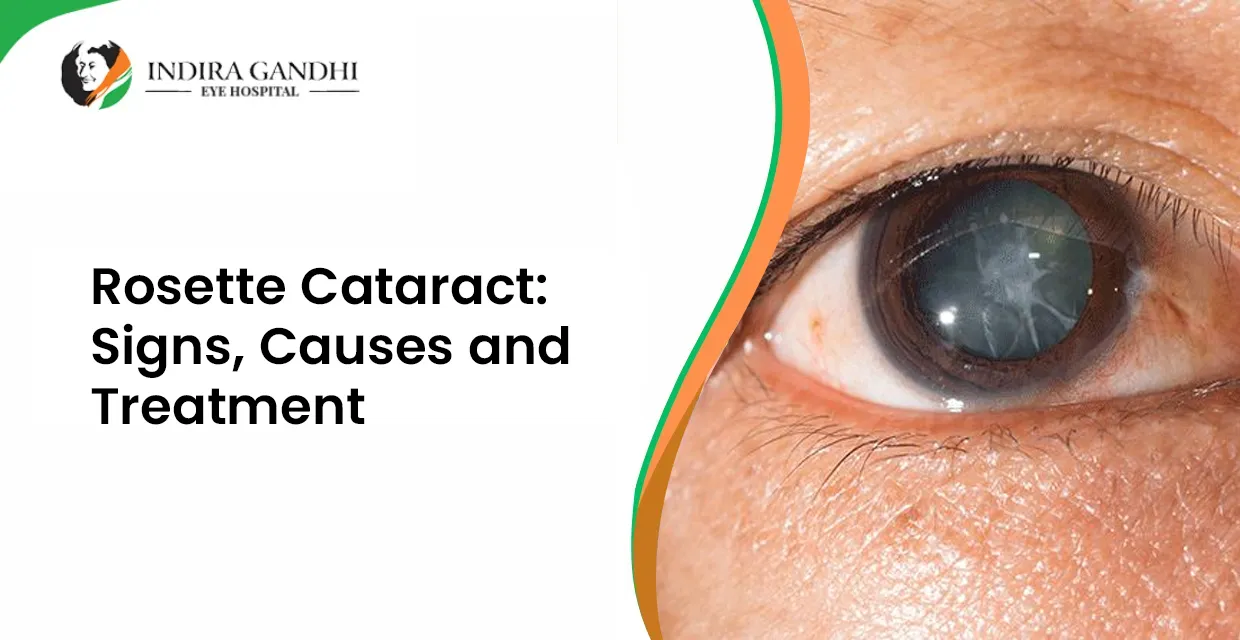In the realm of eye health, clarity and acuity of vision are paramount. Cataracts, a common condition characterised by the clouding of the eye's natural lens, pose a significant threat to these vital aspects of vision. Among the various types of cataracts, the rosette cataract stands out due to its distinctive pattern and formation. This comprehensive guide aims to shed light on rosette cataracts, from their causes and symptoms to diagnostic procedures and advanced treatment options, with the goal of enhancing awareness and facilitating early intervention.
Understanding the Rosette Cataract
The rosette cataract, aptly named for its star-shaped pattern resembling a rosette, is a less common variant of cataract that can significantly impair visual function. Unlike the more uniform cloudiness observed in typical cataracts, the rosette cataract manifests as a series of opacities radiating outward from the center of the lens, forming a pattern akin to the petals of a flower. This unique configuration not only affects visual acuity but also contributes to a range of visual disturbances.
Delving into Causes and Risk Factors
The genesis of rosette cataracts can often be traced back to specific incidents or predispositions, including:
Traumatic Injuries: Physical trauma to the eye, such as a blow or puncture, can disrupt the lens structure and lead to the formation of a rosette cataract.
Radiation Exposure: Certain types of radiation, particularly ionizing radiation, are known to induce cataract formation, with rosette cataracts being a possible outcome.
Genetic Factors: While less common, genetic influences may predispose individuals to the development of rosette cataracts, indicating a potential hereditary component.
Recognising Symptoms: Beyond Blurred Vision
The manifestation of rosette cataracts entails a spectrum of visual symptoms, which may include:
Blurred or Cloudy Vision: The primary indication of a rosette cataract, where vision becomes less sharp and clear.
Light Sensitivity and Glare: Increased discomfort and vision impairment in bright light conditions or when facing glare from headlights or sunlight.
Challenges in Night Vision: Difficulty in seeing and navigating in low-light conditions.
Perception of Halos: A noticeable ring or "halo" effect around light sources, further complicating vision.
Diagnostic Pathways: A Step-by-Step Approach
The diagnosis of rosette cataract involves a series of eye examinations aimed at assessing vision and inspecting the lens, including:
Visual Acuity Test: This fundamental test evaluates how well you can see at various distances, pinpointing any significant decrease in vision sharpness.
Slit-Lamp Examination: Utilising a specialised microscope combined with a bright light, this exam allows for a magnified view of the eye's structures, facilitating the detection of cataract patterns and severity.
Dilated Eye Exam: By dilating the pupils with eye drops, this examination provides a clear view of the eye's internal structures, including the retina and optic nerve, essential for a comprehensive assessment.
Advancements in Treatment: Pathways to Clarity
The cornerstone of rosette cataract treatment is surgical intervention, with phacoemulsification being the predominant method. This minimally invasive procedure entails the use of ultrasonic vibrations to emulsify the clouded lens, which is then aspirated from the eye. Subsequently, an intraocular lens (IOL) is implanted to restore vision, offering a high success rate and minimal recovery time.
Prevention and Lifestyle Adaptations: Proactive Measures
While it's not always possible to prevent the onset of rosette cataracts, adopting certain measures can mitigate risks:
Protective Eyewear: Employing safety glasses or shields can protect the eyes from potential trauma and harmful radiation.
Regular Eye Examinations: Early detection is key; routine check-ups enable the identification of cataract formation in its nascent stages.
Mindful Radiation Exposure: Awareness and minimisation of exposure to radiation sources can play a crucial role in eye health.
Conclusion: Empowering Vision Through Knowledge
The journey through understanding and addressing rosette cataracts underscores the importance of awareness, timely diagnosis, and the advancements in cataract treatment in Gurgaon. Embracing preventive practices and staying informed about the symptoms and treatment options are essential steps towards safeguarding eye health. For individuals in Gurgaon experiencing symptoms or seeking more information on cataract treatment, consultation at Indira Gandhi Eye Hospitals is imperative. Together, we can navigate the complexities of rosette cataracts, ensuring a brighter, clearer future for those affected.


